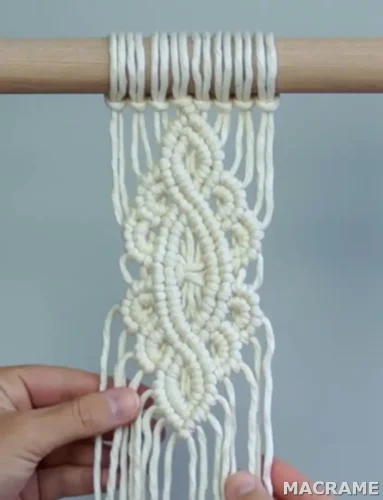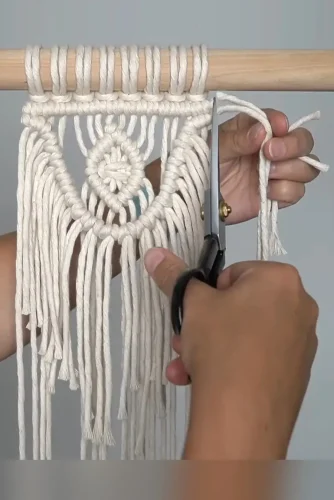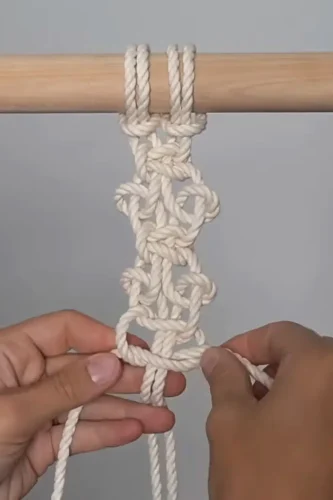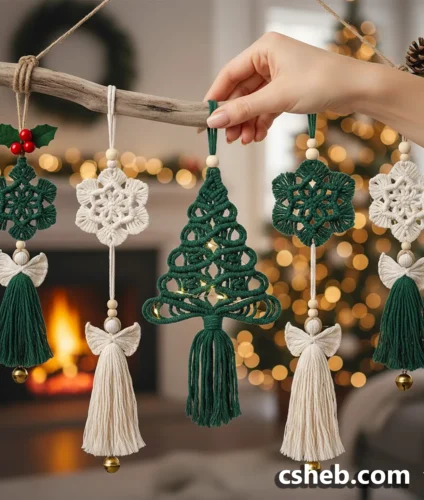How To Get Started With Macrame: Squiggle Pattern
Table of Contents
How To Get Started With Macrame
MACRAME is an evergreen decorative knotting craft which anybody can do with a little bit of practice! It is a fantastic way to produce highly functional and gorgeous pieces of artwork to beautify your own home with vintage flair. In this post, I will show you the most common macrame patterns, suggest favorite macrame supplies, and demonstrate how to get started with your first macrame project. Here, you will learn:
Tips For Learning DIY MACRAME
Same time, Is a great way to improve your skills and even learn how to make a living. If you love scrapbooking or any other craft, you will enjoy learning about this method of creating beautiful works of art. Diy MACRAME is not only a good way to learn how to do something, but it is also fun. It can even be your career, if you really wanted it to be. I am going to give you some information on this wonderful craft so that you may begin your journey today.
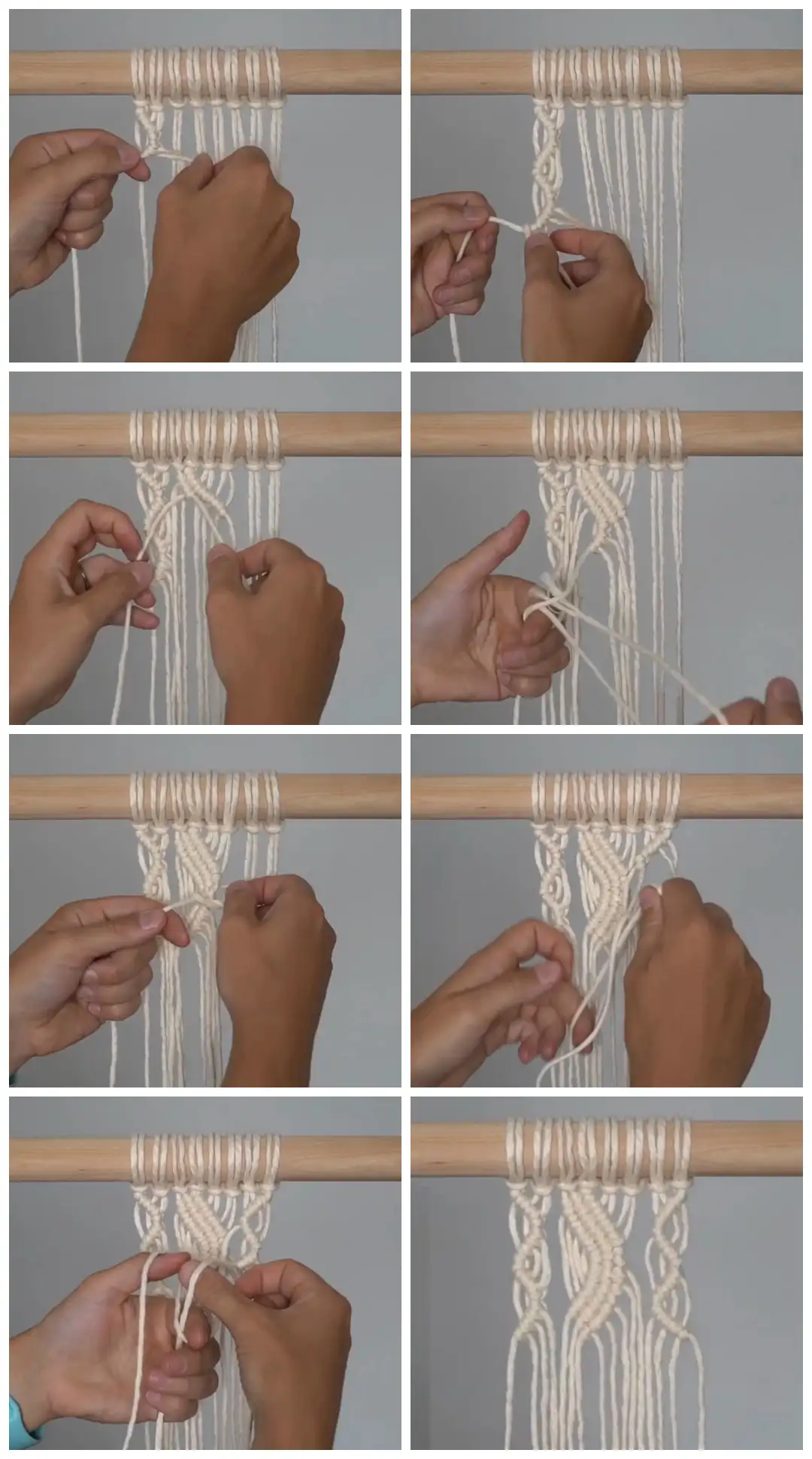
Learning DIY MACRAME is as simple as learning to read. There is a simple knot that every pattern uses to connect two strips of fabric together. You will have to learn these basic macrame knots, because they are the building blocks of any good pattern. You can spend hours learning how to use these knots in different patterns, or you can use just the basic knots to get the project started. When I first began my project, I wanted to use the basic knots to make a scarf. The project went well, and I knew that I would eventually want to make more complex projects. Beginning builder, starting out with the easy stuff is always best
The knot that everybody knows: The clinch knot or clinch macrame. This knot is frequently asked questions by beginners because it is the easiest to learn. It involves creating loops on a string then tying them together into larger projects. This pattern is especially good for working with thicker cords where you can use larger strands to create tension within the smaller thinner ones.
Is also called, Chinese knots in Japan, or Indian hemp rope in the United States. When people refer to macrame, they are talking about long strips of colorful cloth, hemp, or other strong material that has been braided. These strips are threaded and knotted together to form simple or complex shapes. Some people refer to these as macrame cords, but technically they are not really made of macrame cords, they are actually made up of braided-like fabric.
MACRAME is also known by a variety of names depending on the area in which you live. In Hawaii, the knot is called “palm”, in Scotland, “bobbin” (or purse), in Australia and Canada, “paille” (twine) in New Zealand, and in the United States, “plant hangers”. The tradition of making these beautiful art forms began in Hawaii hundreds of years ago. Today you will find this knot used in many different craft patterns. You will also find that it is often used as an ornament to accent wall hangings, or as a decorative component on tables or shelves.
Unlike other crafts, like needlepoint or knitting, working with macrame cords is relatively simple to learn. A beginner will start by making simple projects, like plant hanger headboards or shoji screens, simple bird or flower pots, and small cushions. They will work their way up to more intricate projects, like a flower or animal baskets, small candlesticks, and decorative wall hangings. A great project to choose when learning how to make macrame cords is to make a simple purse or wallet. It will provide some simple practice as you learn how to tie the different knots.
One of the most popular knots used for macrame projects is the double crochet, which has its origin in the ancient technique of “wrap around” called “half hitch”. It is common to find these patterns referred to as “square knot”, “triangle stitch” or even “worm” knots. This style of knot can be found in both free patterns and paid patterns. While free patterns are often freely available, you may have to pay for the professional design.
A knot pattern is simply a series of shapes, usually derived from simplex knot patterns, which are repeated over. In addition to being simplex, they can also be polygonal or symmetrical. The key to learning how to macrame is to learn the basics first, such as what the basic knots are. Once you’ve learned all these key concepts, you can move on to more advanced patterns.

Material:
– 3mm Classic Cotton String (Colour: Natural)
Today I’m going to show you how to create a design with continuous curved lines.Let’s get started.
Cut 8 pieces of 3mm string, each piece is 2 meters in length. Fold each piece in half and attach to your dowel using Lark’s Head knots.
This design will be split into 3 sections. Use the 4 cords on the left for the first section. Use the cord on the left as your filler cord and tie 3 double half hitch knots (dhhks) working to the right. Repeat working to the left. Repeat that process one more time.
Use the 8 cords in the middle of your work to create a thicker curved line. Use the 3rd cord from the left in this section as your filler cord and tie 5 dhhks working to the right. Use the 2nd cord from the left and repeat. Use the 1st cord on the left and repeat. Repeat working to the left. Repeat that process
Repeat the first section but this time on the right side fo your work starting with the cord on the right as your filler cord.
Continue this process down your work to create a piece of your desired length.
If you’d like you can cut the ends of the working cords and add a dab of glue to where you’ve cut the ends to secure the knots in place.
Thanks so much for watching!
